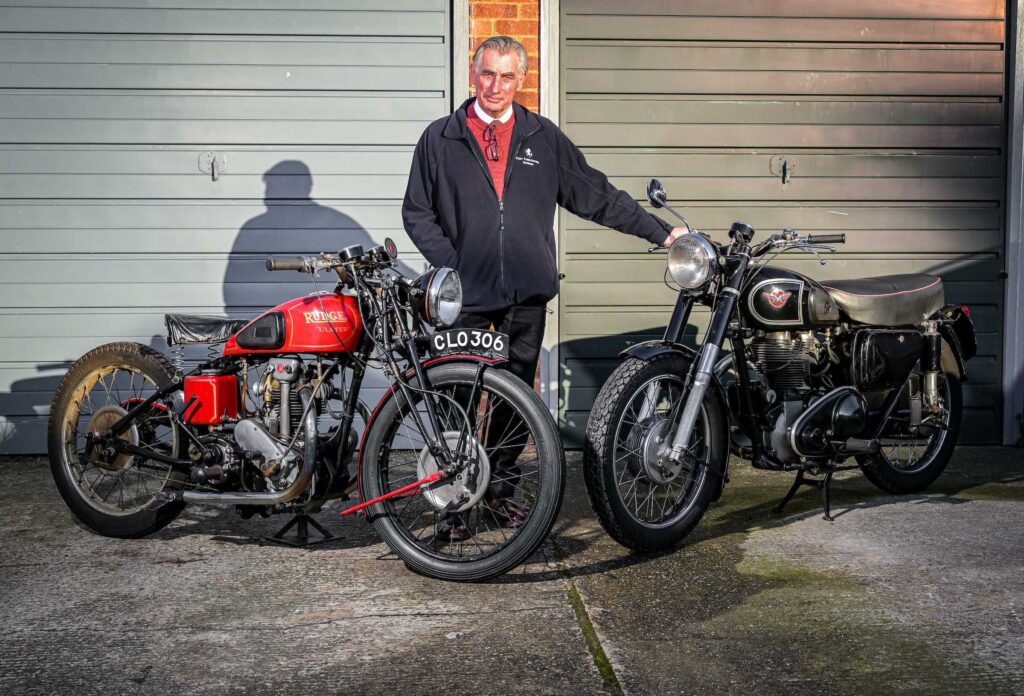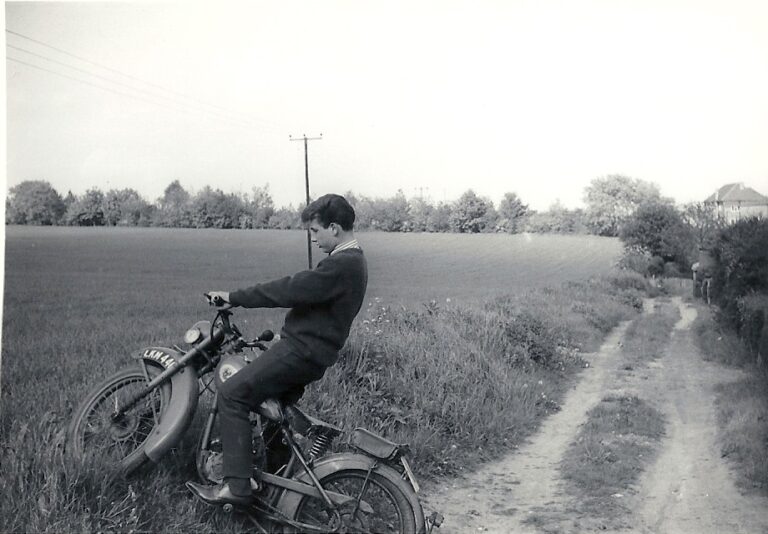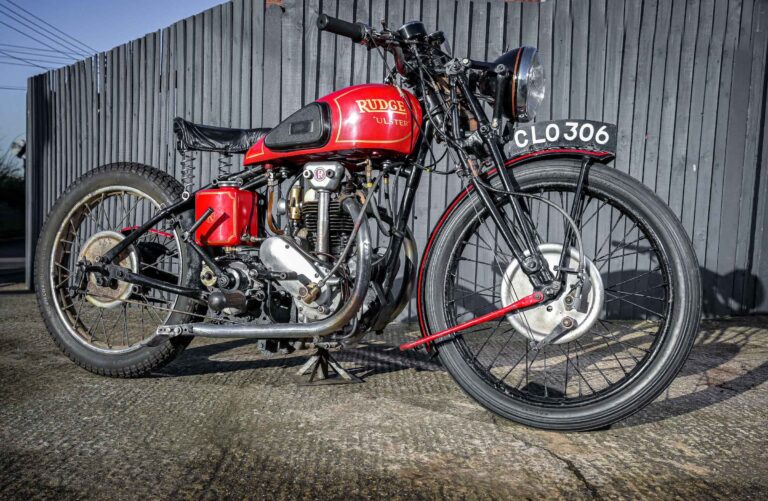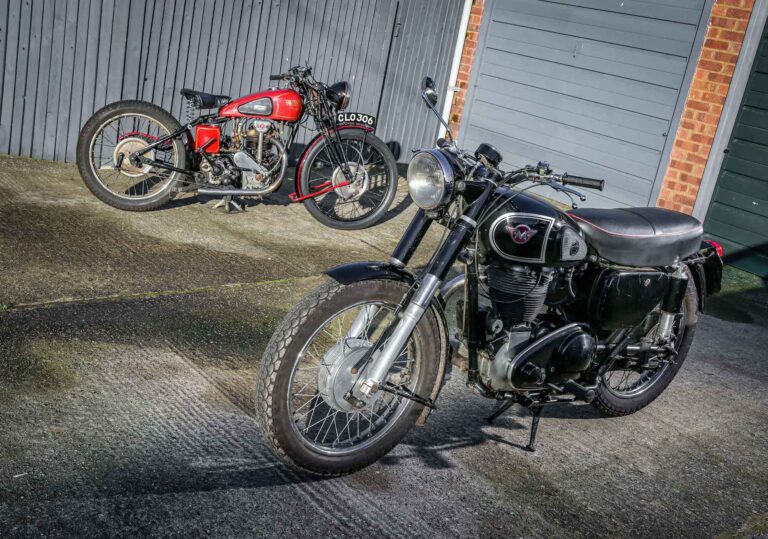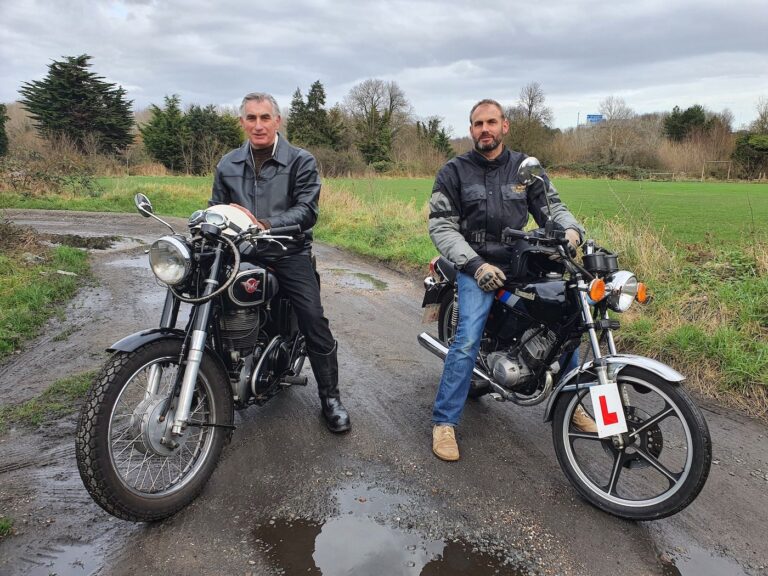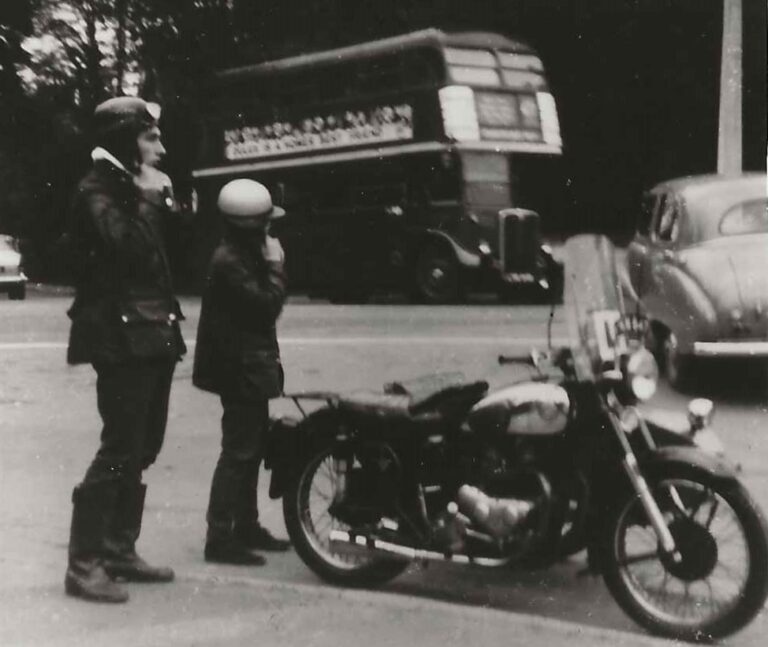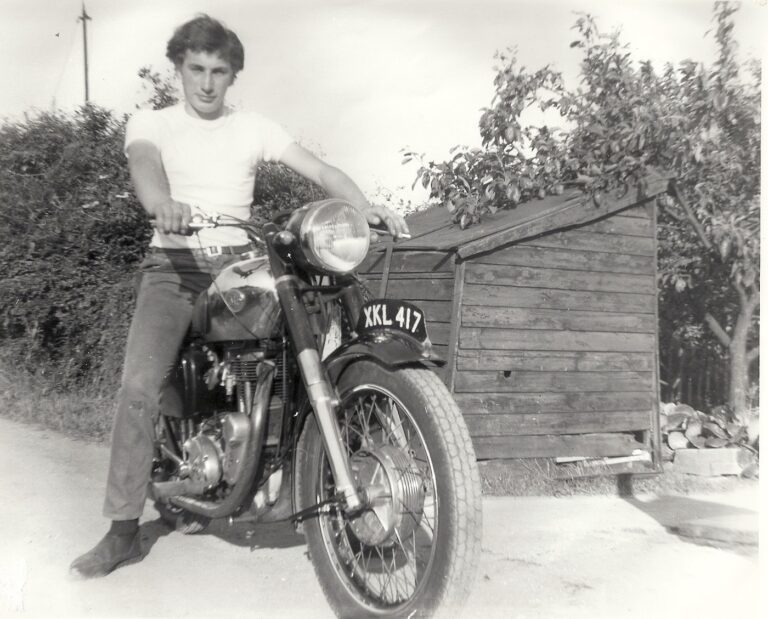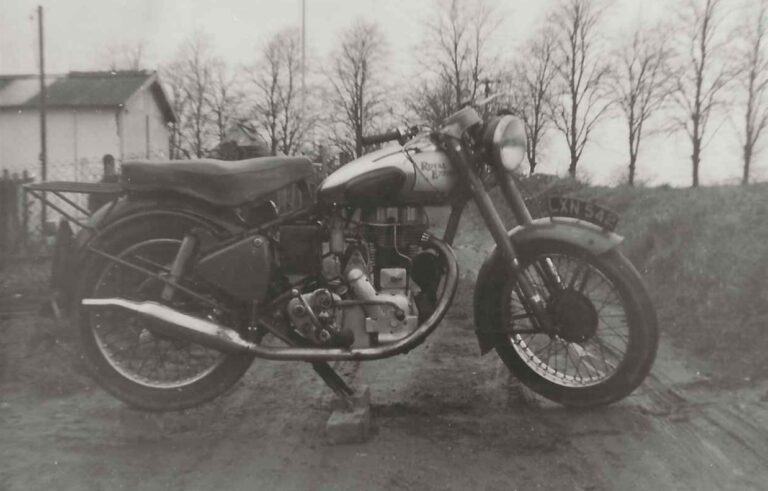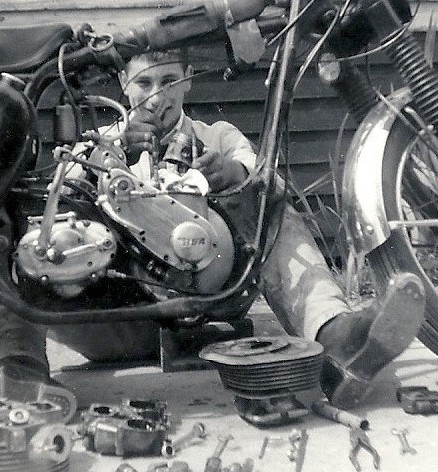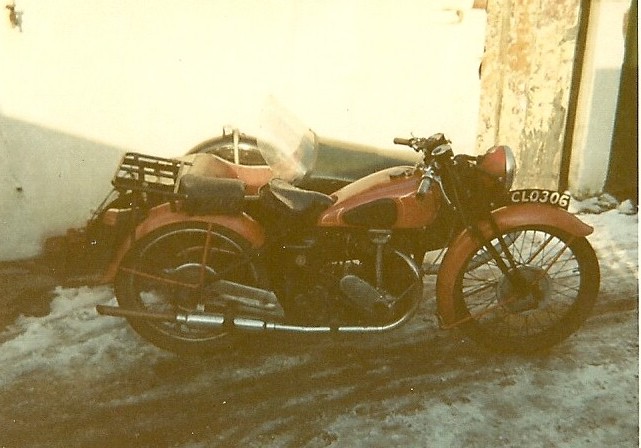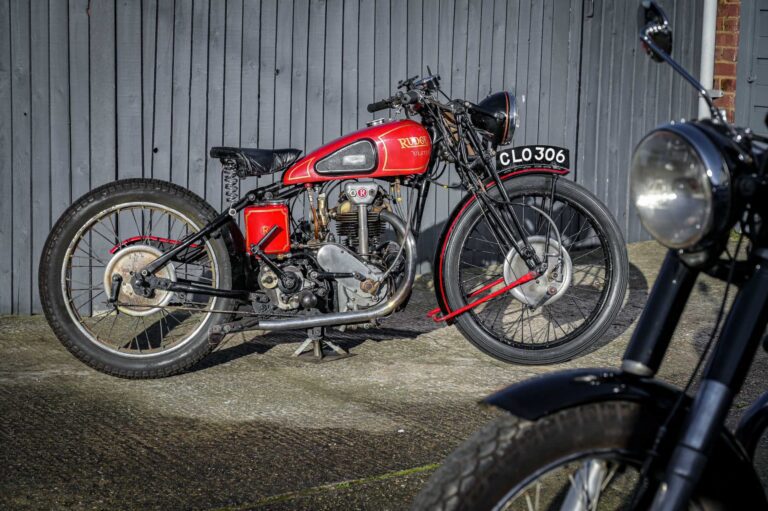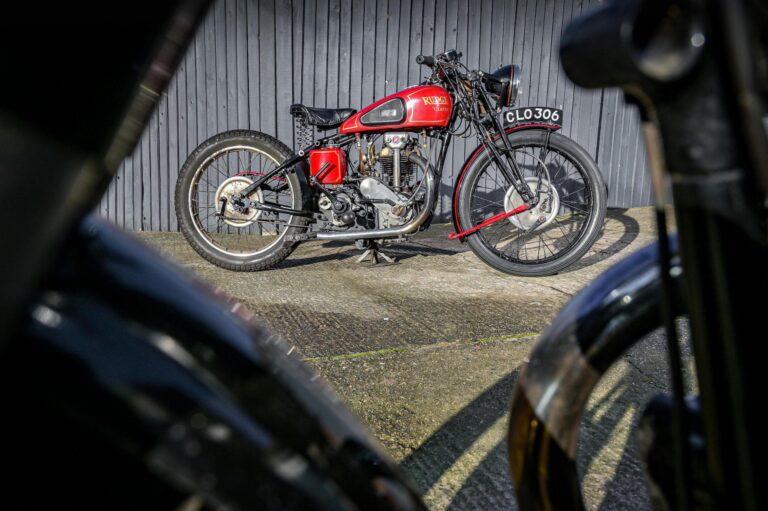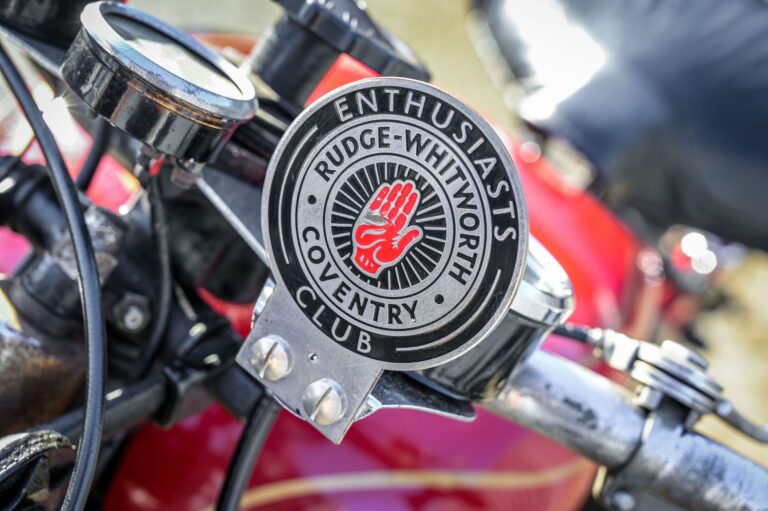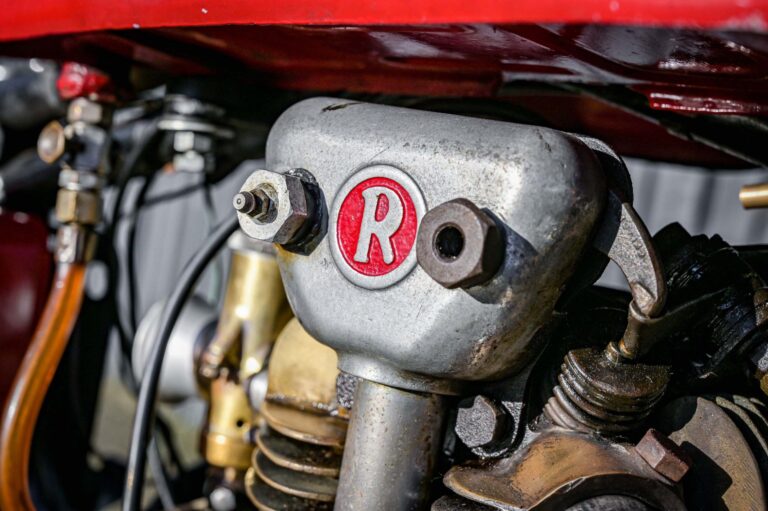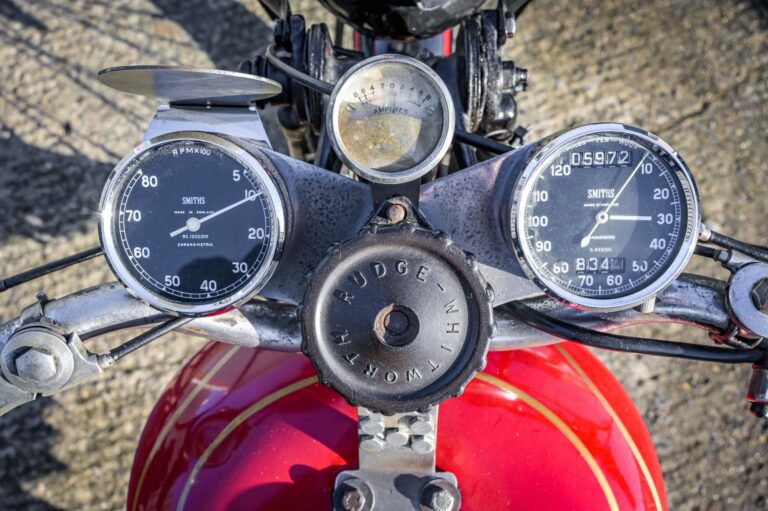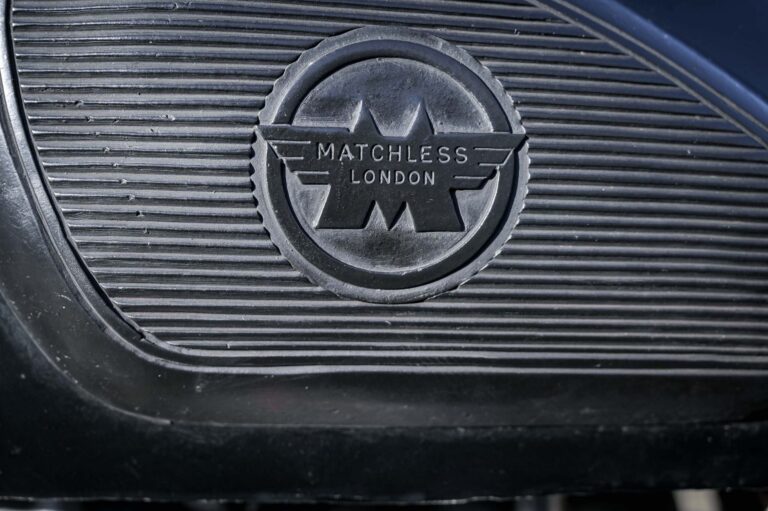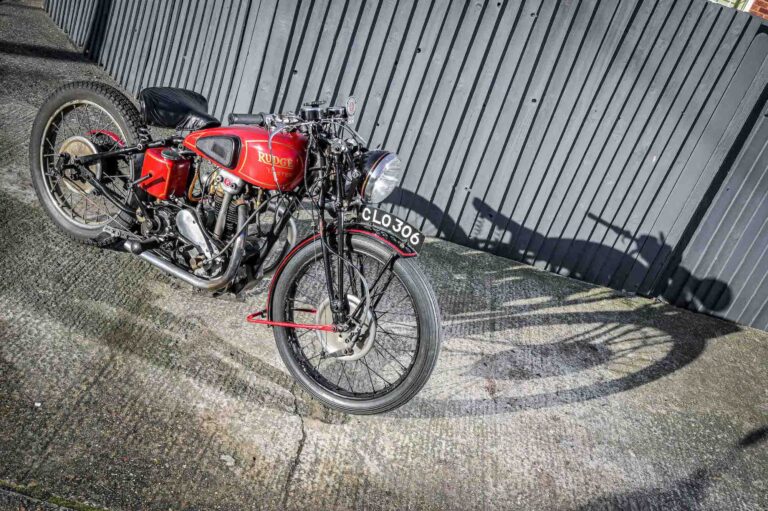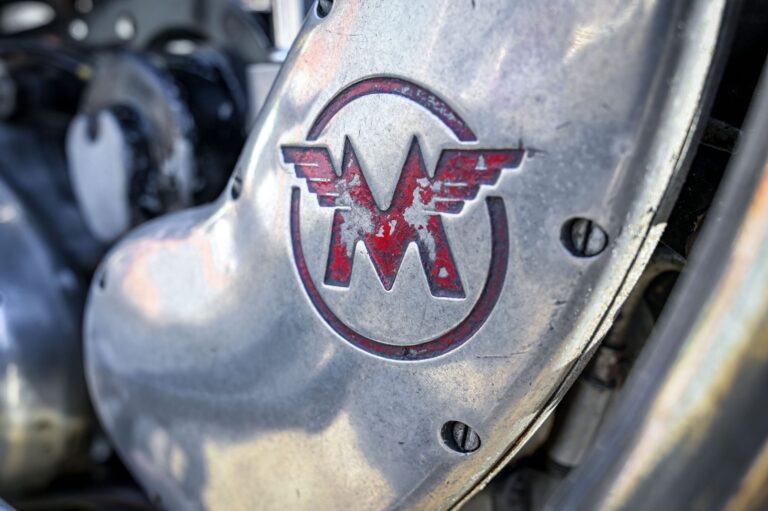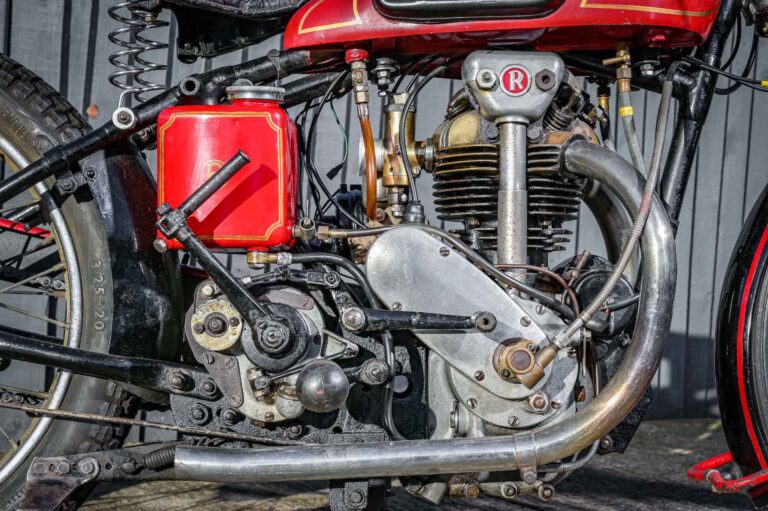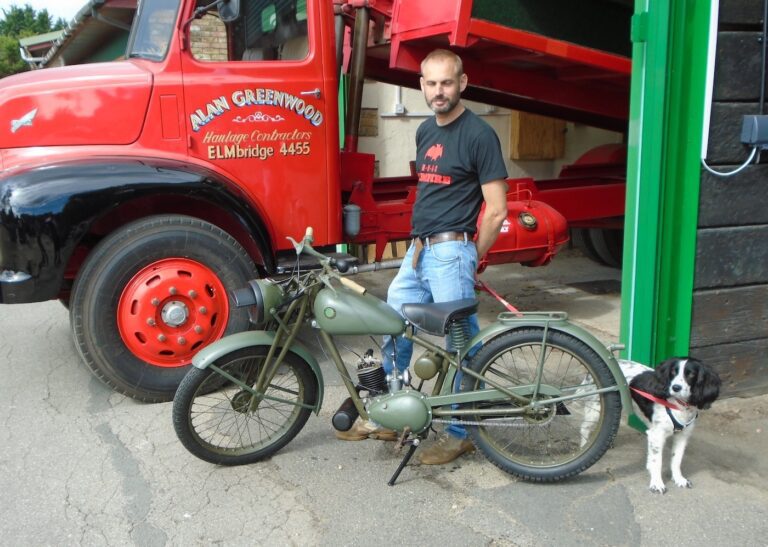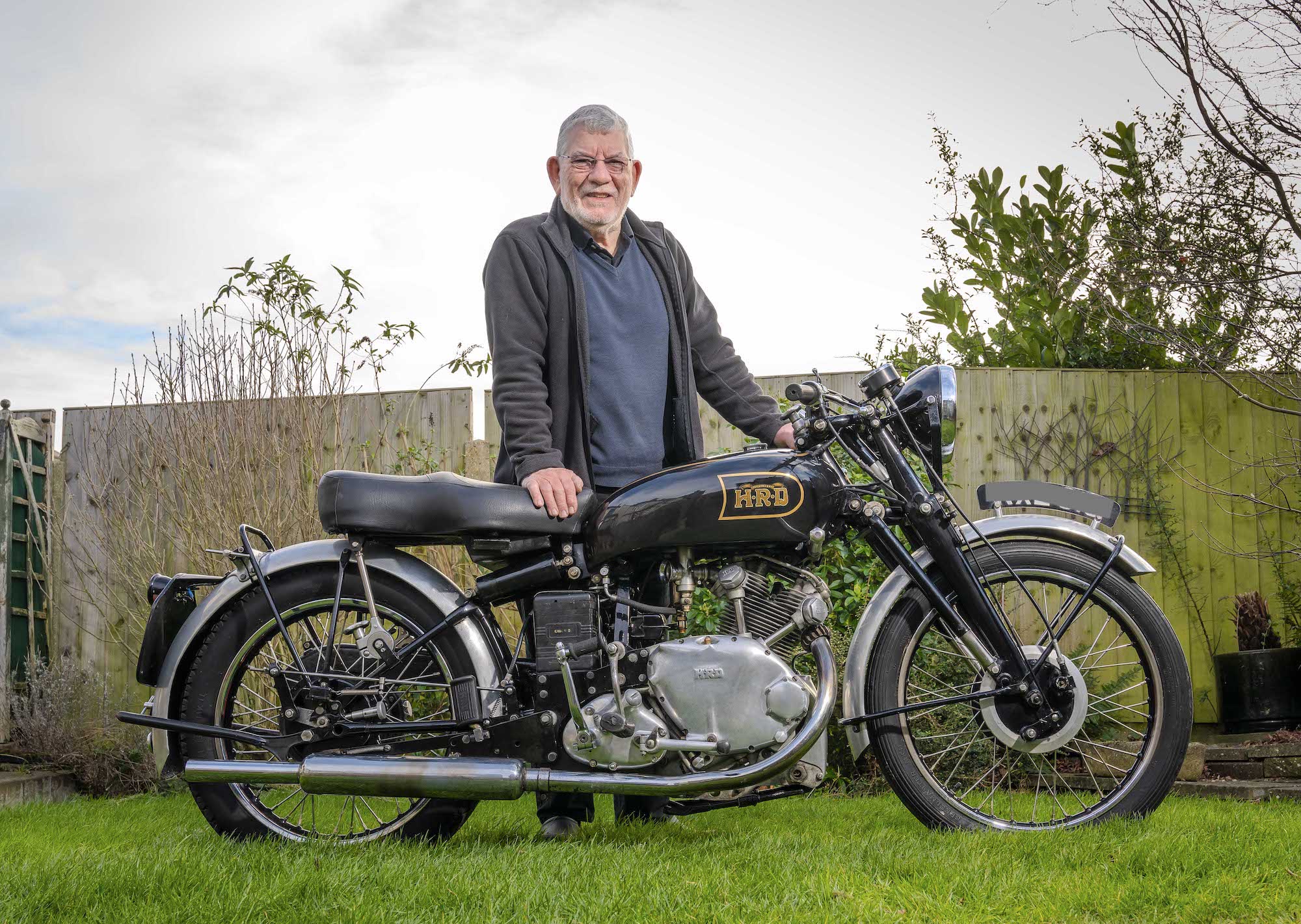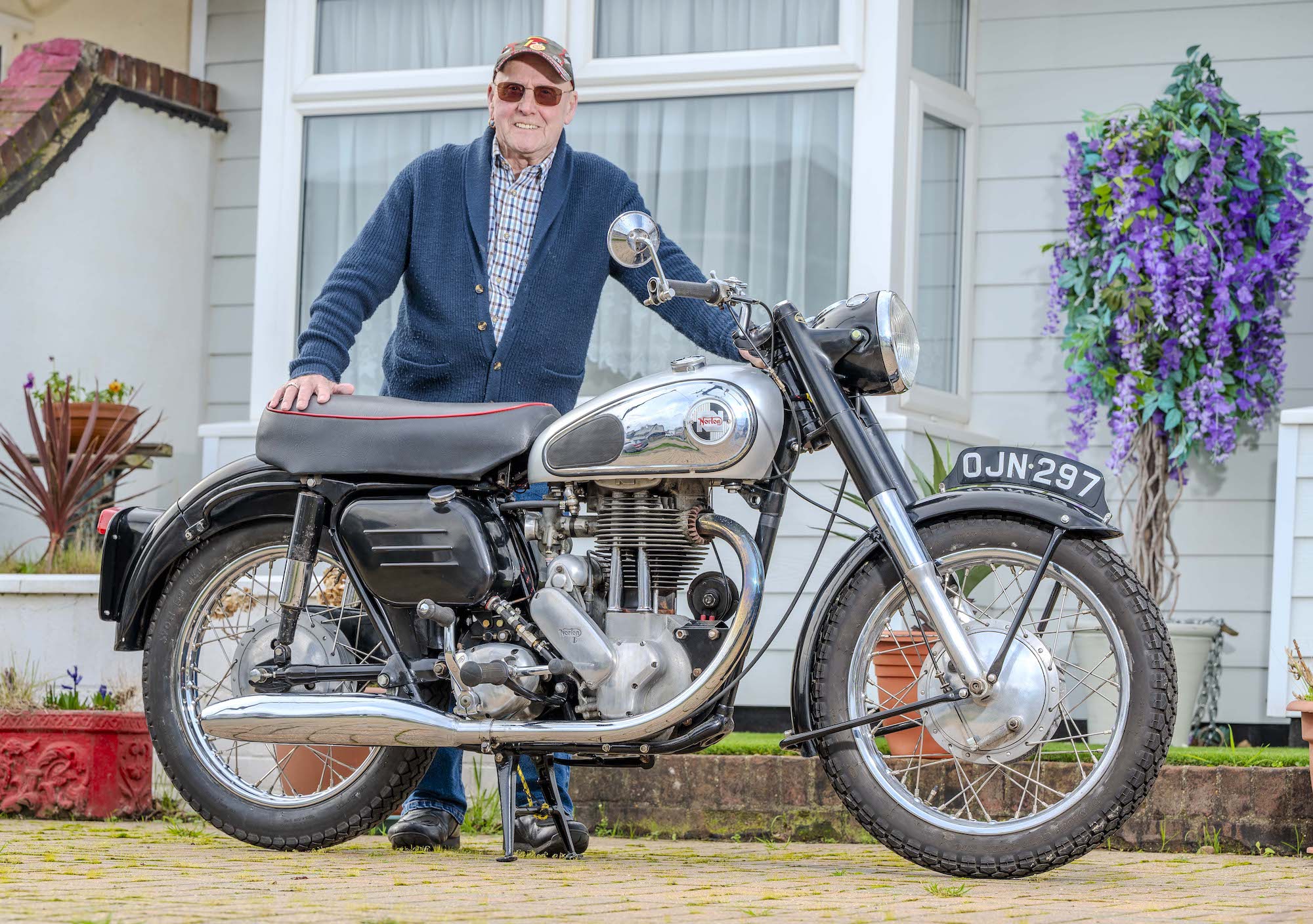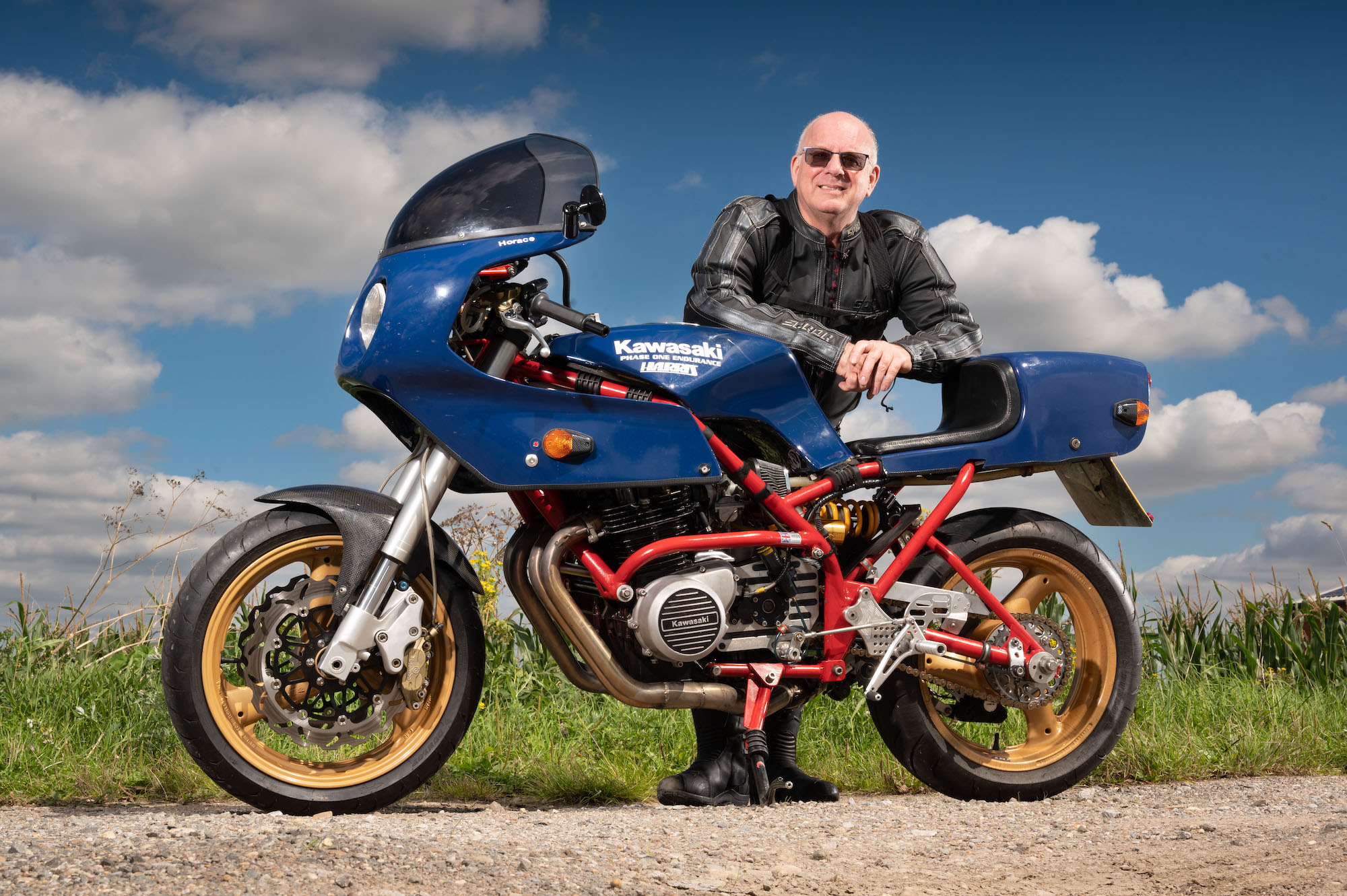John Meakins was still in short trousers when he fell in love with motorbikes, drooling over the ‘52 Matchless G9 500cc twin owned by a much older sister’s boyfriend.
And before he could legally ride on the road, John and his mates would mess about on BSA combinations in the ‘right of way’ lanes behind their homes.
“We cut our teeth on them, but we never got out of second gear because the situation didn’t allow it,” he says, remembering also how he coerced his other sister’s husband into buying an old ‘49 BSA Bantam.
“One of his workmates offered him this Bantam for £5, and I said ‘you’ve got to get it’. It wasn’t worth £5, it was a complete wreck. Anyway, he got so fed up with it letting him down that he offered it to me for free. I had not long turned 16 at the time so I said ‘yeah, I’ll have it’, and that was the start of it.”
Developing a passion for bikes from the 1920s and ’30s
John would spend all his spare time with his head in motorcycle magazines, the older the better, developing a passion for the bikes – and the culture – of the 1920s and ‘30s.
“I just got enveloped, not just with the bikes but the whole way of life, the cars, fashion, music, I was just locked into it, and I still am,” he says. “I used to go to jumble sales and look for old 78 records of dance bands from the ‘20s and ‘30s. I still liked the Beatles, Tamla Motown and things like that back in 1963 though!
“Also, there was a bookshop in Dartford that still had an old stock of Pitman’s ‘bike manuals written by W C Haycraft, and I bought nearly all of them: Rudge, Vincent, Sunbeam, New Imperial etc.”
All of which explains his decision, as a 21-year-old in late 1968, to buy a 1936 Rudge Ulster, attracted by the company’s innovative ideas and racing history.
More than 50 years on and, despite spending decades off the road, that same Rudge shares John’s garage with a 1953 Matchless G80S, acquired as a wreck in 1969, moved on to a friend in the early 2000s, and bought back in 2020.
“I get attached to things, and I couldn’t get rid of the Rudge,” says the retired fireman, who has looked after a 1930s fire engine, now owned by Dartford council, since 1973.
While the Rudge still needs a bit of work to get it back on the road, John has been out on the Matchless, with his son Douglas riding his own 1990 Kawasaki KH100.
“We bought him the Kawasaki when he was 16 or 17, in the mid ‘90s, but after he got a car it sat in the garage for years,” he says. “When I got the Matchless he sort of persuaded me to try and get the Kawasaki going with him again.
“The bikes will go to him, unless I have a brainstorm and decide to sell them. But he has an interest, partly because they are mine. I think he’s more interested in the Matchless, because that’s what I’ve been riding when we’ve been out on our bikes.”
Back to 1963, and John would ride the D1 Bantam to and from school, soon moving on to a ‘52 James Captain, with a 197cc Villiers engine, which he would ride into central London when he started work for the General Post Office (GPO Telephones) aged 16.
Looking for more power
Soon, he was looking for something more powerful but, because he was still a learner, it would have to come with a sidecar attached.
“I got a pay rise at the GPO, and it was backdated, so I ended up with £28 of ready cash to get rid of,” he smiles. “I bought a 1951 AJS Model 20, 500cc twin, with sidecar, for £27 10s. You were allowed passengers on a combination as a learner back then, so I took people in the sidecar and on the pillion, though I did get rid of the double adult and put on a beaten up Watsonian Avon single seater.”
While with the GPO, John was studying on a day release basis at the City College for Further Education near Moorgate.
“I went up there one day and they said ‘we’re not allowing you to park your motorcycles in the college anymore, you’ve got to go and find somewhere on the street’,” he remembers, by then riding the AJS 500cc twin as a solo after passing his test earlier that year on a borrowed Norton 250cc Jubilee Sports.
“I thought ‘oh well, that’s it, I’m going home’, so I went home and immediately wrote a letter to the Kent Fire Brigade. By then I was just 18, the age you had to be to join up.”
Before starting his new job as a fireman in December 1965, he had put the Villiers 6E engine from the James into a DOT trials frame.
That was the bike he turned up on to attend his first day of fire brigade training, but he had also recently purchased a 1951 Royal Enfield Bullet 350cc for £12 10s, and would alternate between the two bikes for his weekly travels to and from the residential course at Linton, Kent.
“While I was on the course I was getting full wages and not having to give my mum so much money because I was being fed and watered at the training centre,” he says.
“I managed to save up a few bob from my £12 a week wages – a big increase from the £9 at the GPO – and in March 1966 I bought a ‘59 Gold Star DB32 350cc for £65 from a chap I knew.”
As well as the Goldie, there were other bikes between 1966 and ‘68 – a 1937 AJS V-twin 1000cc combination and a 1957 AJS Model 30 twin 600cc combination – but by August 1968 they had all gone when John needed some extra cash to get married.
“I sold the AJS Model 30 to one of my brothers-in-law for £12 – the one who gave me the Bantam – and he also threw in a kitchen table and four chairs,” John says, transport now being provided by a 1957 Singer Gazelle estate, then a 1955 Ford Prefect 100E.
But it wasn’t long before John was looking for another bike.
“Always keen on Rudges”
“I was always keen on Rudges, and I had an old handbook that I’d read from cover to cover,” he says. “I thought ‘I’ve got to try to get a Rudge’. You saw them now and again in Exchange & Mart, and I found a 500cc Ulster combination advertised for £25 in Hullbridge, near Southend.”
With one of his brothers-in-law driving the Ford Prefect, John steered the Rudge back home to Kent attached by a tow rope.
“We got stopped by a motorcycle cop in Essex, but he was fine,” he remembers. “He was more interested in the bike, because even then it was over 30 years old.”
The sidecar was dispensed with, and John set about smartening up the old bike as a running restoration.
“I was riding it as a toy, just fair weather riding, because I didn’t need it as such,” he says. “I did sometimes use it to go to work though, and some of the older guys at the fire station were quite interested, ‘ooh, a Rudge Ulster, that was the cat’s whiskers back in the day’.”
The Ulster production model was essentially a race replica of Walker’s 1929 Grand Prix-winning bike, only the second time a road race had been won with an average speed of more than 80mph.
Advertised as “probably the fastest 500cc motorcycle in production”, the Ulster was road-tested at 92mph, but John says he was “too sympathetic towards such an elderly machine to have attempted any hint of high speed on it”.
Rudge-Whitworth went into receivership in 1933, production of motorcycles only continuing into the early part of the war thanks to major creditor EMI (maker of HMV records) stepping in and resurrecting the marque.
Rudge-Whitworth “did have some novel ideas”
“They were always in financial troubles it seemed, but they did have some novel ideas,” says John, “like the Rudge Multi of 1912, with its variable transmission belt.
“Other manufacturers had moved on to chain drives, so Rudges pulled up their socks and went whole hog, developing single OHV engines with four valves, and also a 4-sp gearbox. They coined the advertising slogan ‘Rudge – 4 valves, 4 speed’.
“The novel thing about the Ulster is that the inlet valves are parallel, but the exhaust valves are radially disposed in the corners of the combustion chamber. It’s quite complicated, but it’s quite a racy engine.
“All these things were fascinating to me. They were unconventional, like the bronze cylinder head, which appealed to me.”
John rode the Rudge for about six years, including regular trips to classic vehicle club meetings at Enfield, but the last tax disc, dated December 1974, marks the end of its time on the road.
“I just laid it up, and even though I’d had it for less than 10 years I didn’t feel as though I could get rid of it,” he says, the old bike moving with him from house to house, garage to garage, until settling in his current home in 1983.
It wouldn’t take much more work to get it back on the road (its rear mudguard does exist, together with the original front one…), and John says the engine does run.
“It sat there for years without running, and there have been times when it’s been at the back of the shed and you wouldn’t have got to it easily,” he adds. “But I’ve been tinkering with it and I’ve kept it clean.
Bike is “proving to be a bit of a pig”
“I’d like to be able to take it to a local motorcycle gathering or something like that. It’s proving to be a bit of a pig, but if I really put my thinking cap on I can do something with it.”
In the meantime, the Matchless, which John saved from an undignified burial back in 1969, is there when he fancies a ride out.
“A friend of mine owned it in the early to mid ‘60s, but he joined the army in about 1966, and he left the bike at another friend’s place, whose father owned a nursery,” he says.
“It got ridden round there by every Tom, Dick or Harry and was thrashed into the ground. I found out that they were about to chuck the remains – it had a smashed engine by that time – in one of the coke boiler stoke holes at the end of one of the greenhouses.
“They were filling them in, I’m not sure why, but they’d already thrown a 1928 Morris pick up down one of these holes and filled it in, and that was going to be the motorbike’s fate.
“I offered to take it off their hands and have it for spares. It had some good bits on it and the back wheel was mine anyway, because I’d loaned it to my mate when he’d got a puncture a few years earlier. The same wheel is still on there now.”
John picked up what was left of the G80S in the removal van he drove on his days off from the fire service.
Putting the Matchless in storage for 35 years
And then, nothing happened for about 35 years.
“I didn’t do anything with it,” he admits. “I’d already got a few spares for those types of bikes, and I picked up some more over the years, so I could have done it.”
Fast forward to 2004, and a fire service colleague who had long badgered John to let him have the Matchless finally got his way.
“I sold it to him in the end, with all the bits I’d collected, for £250,” he says. “He rebuilt it, and then at the beginning of 2020 he asked me if I’d like to buy it back.
“He let me have it for well below market value and I picked it up in June 2020. He had a few other bikes and I think a little bit of him thought he’d like to see me have it back, because I’d saved it if you like. I won’t say I preserved it, that’s not quite the right word, but I certainly stored it for 30 plus years!”
Apart from a handful of rides on borrowed bikes, John had been off two wheels since 1974, but now he was out riding a bike for the very first time that he’d owned on and off since 1969.
Father and son go out for rides together
“It was like I’d never been off bikes, but I do have a bit of a job starting a big single because I had a hip replacement this year,” he says. “Before the operation I couldn’t do anything like that with my right foot, and I’m still inclined to kick the bikes over with my left foot. I don’t want to dislocate my hip – it’s only a pattern part!”
John and Douglas, who is named after the motorcycle manufacturer, now go for rides together.
“We went on a ride out to the Portobello pub on New Year’s day to meet up with other bikers on vintage and classic machines,” says John.
While Douglas was inspired to get his Kawasaki back on the road by the return of his father’s Matchless, he did already own a Royal Enfield Flying Flea, designed for the second world war to be dropped by parachute with airborne troops.
“He’s interested in military stuff and, although he doesn’t ride it on the road, he does take it to shows in his van,” says John. “When I’ve got the Rudge back in one piece, even if it’s not reliable enough for me to ride anywhere seriously, I’d probably get my son to take it in the van and show it.”
While the Matchless means a lot to John, it’s the Rudge he holds dearest in a “close run race”.
“I’m a weird old sort really I suppose, I tend to like the period of time before I was born,” he says. “But then I probably wouldn’t have liked it if I’d lived during that period, because there were also lots of bad things going on. I tend to pick out the good bits.”
The Rudge was definitely one of the good bits.
